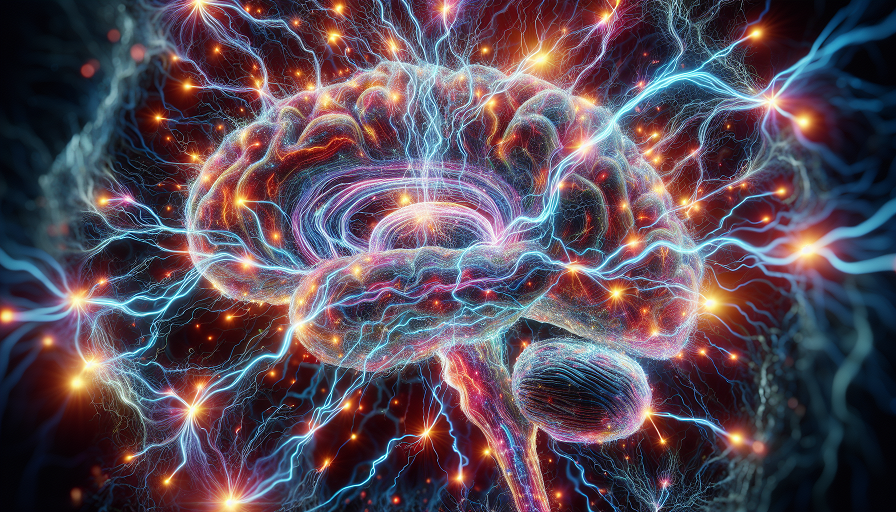
Have you ever wondered how writers can bring characters to life so vividly that it seems like those characters are speaking directly to us? Many writers describe feeling as if their characters have independent voices that guide the narrative. This phenomenon, sometimes perplexing even to the authors themselves, can be better understood through the lens of neuroscience.
Contents
The Creative Brain at Work
Creativity can often feel like a bit of a mystery, but when writers “hear” their characters, there’s actual neurological activity behind it. The brain is made up of numerous networks that can work both independently and together, depending on the task at hand. When creating characters, the brain taps into specific regions that enable imagination, empathy, and decision-making.
Imagination and the Default Mode Network
The Default Mode Network (DMN) is an important part of the brain used during creative tasks. This network lights up when we imagine different scenarios, daydream, or simply think about what might happen next. For writers, the DMN is like the stage on which the drama of their characters’ lives unfolds. It allows them to envision stories and hear the distinct voices of their characters as if they were real people.
Empathy and the Temporoparietal Junction
An essential component of creating believable characters is empathy. Writers often need to step into their characters’ shoes to understand their thoughts, feelings, and motivations. Here, the Temporoparietal Junction (TPJ) plays a crucial role. This brain region helps us tune into other people’s perspectives. For a writer, the TPJ is like a bridge that connects them to the emotional worlds of their characters, enabling them to create rich, empathic narratives.
The Role of Mirror Neurons
Another exciting piece of the puzzle is the role of mirror neurons. These neurons fire not only when we perform an action but also when we observe someone else performing that action. For writers, this means that simply imagining their characters can spark the same neural patterns as if they were experiencing those characters’ actions themselves. This mirroring process helps writers live their narratives, feeling characters come to life as if they existed beyond the page.
Understanding Character Complexity
Characters that stay with us long after we’ve read a book tend to be complex and multifaceted. But how do writers manage to create such depth? Again, it’s helpful to look at how different parts of the brain work together.
Frontal Cortex: Decision Making and Planning
The frontal cortex is the brain’s center for planning and decision-making. Writers use this part of their brain to construct the intricate decisions and machinations of their characters. By analyzing multiple possibilities and outcomes, the frontal cortex allows writers to create layered narratives where characters grow, change, and make surprising yet believable choices.
Temporal Lobes: Memory and Emotion
The temporal lobes play a crucial role in storing memories and processing emotions. When writers create backstories or emotional arcs, they draw on this part of the brain. The temporal lobes help writers establish histories and emotional depth for their characters, making them more relatable and realistic to readers.
The Flow State and Enhanced Creativity
You may have heard of the “flow state,” a psychological term describing a period of heightened focus and effortless engagement in tasks. Writers often experience a flow state during intense writing sessions where they feel as though their characters are telling the story rather than being created by the author.
During flow states, brainwaves show a unique pattern that enhances creativity. Alpha waves, which are linked to relaxation and a lack of mental clutter, become more prominent. This allows for a sort of clarity and spontaneous creativity where the barriers between author and character blur, leading to character development that feels authentic and intuitive.
The Mental Benefits of Writing
Interestingly, the process of creating characters and writing stories can have several mental health benefits for writers. Engaging in creative writing can serve as a form of escapism, which can be therapeutic. This storytelling process also enhances empathy, emotional intelligence, and cognitive flexibility.
- Empathy: By regularly inhabiting the lives of fictional characters, writers can become more empathetic, which can improve relationships and social interactions.
- Stress Relief: Diving into the creative process can provide a valuable outlet for stress, offering a break from daily worries and promoting overall emotional well-being.
- Problem-Solving: Regular writing fosters improved problem-solving skills, as writers learn to navigate plot twists and character challenges.
Training the Brain for Creativity
Developing characters that truly resonate with readers involves deliberate practice and an openness to experiencing diverse perspectives. Writers can train their brains for creativity and character development in several ways:
Read Widely and Deeply
Reading a variety of genres and styles exposes writers to different narrative techniques and character archetypes. This exposure fuels the imagination and provides a reservoir of ideas and inspiration to draw upon during writing sessions.
Write Regularly
Consistency in writing helps to cultivate a natural writing rhythm and reduces any barriers to entering flow states. By making writing a regular habit, writers can more easily access the depths of their creativity and better engage the neural networks responsible for storytelling.
Engage in Thoughtful Observation
Observing people, behaviors, and social interactions can enhance a writer’s ability to create authentic and relatable characters. By practicing mindfulness and paying attention to the subtleties of human behavior, writers improve their capacity for empathy and understanding, which translates into deeper character development.
Embrace New Experiences
Exposure to new experiences stimulates the brain and enhances cognitive flexibility. Traveling, learning new skills, or stepping out of one’s comfort zone can enrich a writer’s perspective and supply fresh material for writing.
Use Writing Prompts and Exercises
Writing prompts and exercises can kickstart creativity and unlock new ways of thinking about characters and plotlines. These activities challenge the brain to think differently and explore stories from various angles.
The Voices Within
The voices writers hear when creating characters aren’t mere whispers from beyond but represent a fascinating interplay of complex brain functions. Understanding how the brain helps writers imagine, empathize, and create can deepen our appreciation for the art of storytelling. While it might seem like a mysterious gift, the creation of characters is rooted in very tangible and exciting aspects of neuroscience. Whether you’re a writer or an enthusiastic reader, knowing the science behind character creation offers not just insights but a celebration of human creativity and imagination.

